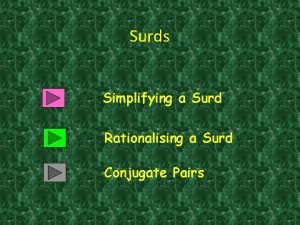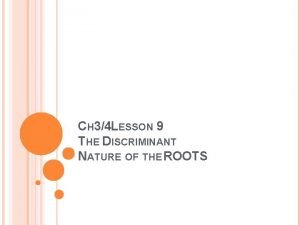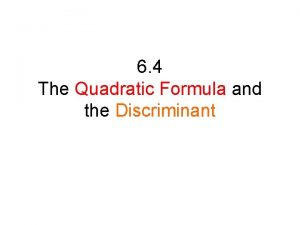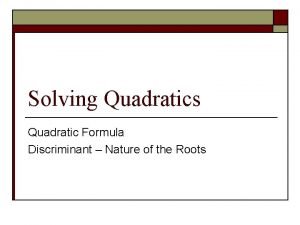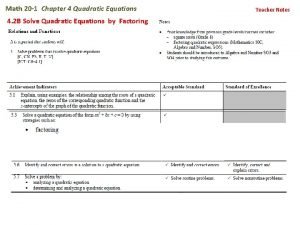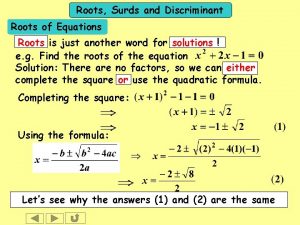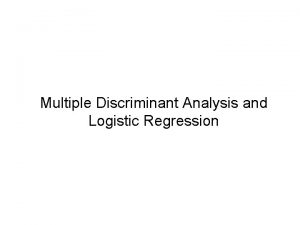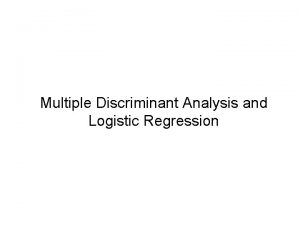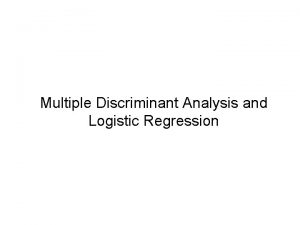The Discriminant Roots Surds and Discriminant The Discriminant







- Slides: 7

The Discriminant

Roots, Surds and Discriminant The Discriminant of a Quadratic Function The formula for solving a quadratic equation is The part is called the discriminant Because we square root the discriminant, we get different types of roots depending on its sign.

Roots, Surds and Discriminant The Discriminant of a Quadratic Function To investigate the roots of the equation we consider the graph of the function The roots of the equation are at the points where y = 0 ( x = 1 and x = 4) The discriminant The roots are real and distinct. ( different )

Roots, Surds and Discriminant The Discriminant of a Quadratic Function For the equation the discriminant The roots are real and equal ( x = 2)

Roots, Surds and Discriminant The Discriminant of a Quadratic Function For the equation. . . the discriminant There are no real roots as the function is never equal to zero If we try to solve , we get The square of any real number is positive so there are no real solutions to

Roots, Surds and Discriminant SUMMARY The formula for solving the quadratic equation is The part is called the discriminant The roots are real and distinct ( different ) The roots are real and equal The roots are not real If we try to solve an equation with no real roots, we will be faced with the square root of a negative number!

Roots, Surds and Discriminant Exercise 1 (a) Use the discriminant to determine the nature of the roots of the following quadratic equations: (i) (ii) (b) Check your answers by completing the square to find the vertex of the function and sketching. Solution: (a) (i) The roots are real and equal. (ii) The roots are real and distinct.
